A ship sailing without a map or compass will most likely get lost, encounter unexpected storms, and drift off course. To avoid this in the business world, companies create a policy and procedure manual to provide clear guidelines and keep everyone on the same page.
Without a policy and procedure manual, organizations can encounter challenges like inconsistent practices, miscommunication, employee confusion, and legal liabilities. This can lead to decreased efficiency and reduced productivity.
In this article, we’ll discuss policy and procedure manuals, their types, benefits, essential elements, and how to create one effectively. We’ll also explore user manual templates and examples to inspire your policy & procedure manual creation.
What Is a Policy & Procedure Manual?
A policy and procedure manual is a comprehensive document that outlines an organization’s policies, procedures, and guidelines for various activities and operations. It serves as a central repository of information, providing employees with clear instructions on performing tasks, adhering to company policies, and ensuring compliance with legal and regulatory requirements.
These manuals typically include a wide range of information covering employee conduct, workplace safety, hiring and termination procedures, leave policies, customer service protocols, and more. They aim to standardize practices, promote consistency, and ensure everyone within the organization operates from the same playbook.
For example, a retail store’s policy and procedure manual might cover employee conduct, customer service (including handling inquiries and returns), inventory management, opening/closing procedures, and safety regulations.
What Are the Common Types of Policy & Procedure Manuals?
Policy and procedure manuals can be categorized into various types based on their scope, audience, and purpose. Let’s discuss these types:
General Policy Manual
This comprehensive manual outlines fundamental guidelines and principles that govern your organization.
It covers overarching policies that apply company-wide, fostering a unified approach and maintaining consistency in decision-making and practices.
Employee Handbook
The employee handbook serves as a compass for your workforce. It details company policies, code of conduct, benefits, and expectations, providing a reliable reference for new employees to understand their roles and responsibilities.
Safety & Emergency Procedures Manual
This manual emphasizes safety, highlighting protocols and procedures for ensuring a secure work environment.
It is a crucial resource for addressing emergencies, preventing accidents, and maintaining the well-being of your employees.
IT & Security Manual
This manual, focused on technology and data protection, outlines guidelines for using IT resources, data security measures, and digital communication protocols.
It safeguards sensitive information and ensures responsible technology usage across the organization.
Financial Policies Manual
This manual delves into fiscal matters, detailing financial procedures, budgeting processes, expense reporting, and financial controls.
It ensures transparent and responsible financial management while safeguarding the organization’s fiscal health.
Quality Control Manual
Essential for industries emphasizing quality, this manual defines procedures to maintain consistent product or service standards.
It outlines inspection, testing, and continuous improvement processes, ensuring customer satisfaction and regulatory compliance.
Human Resources Manual
The human resource manual covers a range of HR practices, including recruitment, performance management, employee development, and conflict resolution. It guides HR professionals and helps maintain a positive workplace culture.
What Are the Important Elements of a Policy & Procedure Manual?
Here are the essential elements that should be included in policy and procedure manuals:
Title Page
Clearly states the manual’s title, the organization’s name, and the date of the latest revision. This provides context and ensures users are referencing the correct version.
Table of Contents
Outlines the manual’s structure and allows easy navigation to specific sections or topics.
Introduction/Foreword
Includes an introductory section that provides an overview of the manual’s purpose, scope, and intended audience. This section sets the context and helps users understand the document’s importance.
Policy Statements
Clearly articulates each policy with a concise description, rationale, and implications. This section should be written in unambiguous language, avoiding jargon or technical terms.
Procedural Steps
This provides a detailed step-by-step guide outlining the actions required to complete each procedure’s task or process. Action verbs, numbered lists, and flowcharts enhance clarity and consistency.
Areas of Responsibility
Clearly defines the roles and responsibilities associated with each policy and procedure. Specify which individuals or departments are accountable for implementing and adhering to the guidelines.
Definitions & Glossary
Defines key terms and concepts used throughout the manual. This ensures that everyone understands the terminology and avoids misinterpretations.
Appendices & Supporting Documents
Includes any relevant supporting documents, such as forms, templates, or checklists. This will provide users with easy access to additional resources and tools.
Revision History
Maintains a record of all revisions and updates made to the manual, including the date of each revision and a brief description of the changes made. This ensures transparency and allows users to track modifications.
What Are the Benefits of Creating a Policy & Procedure Manual?
Creating policies and procedures can significantly benefit your organization in various ways. Let’s discuss its many benefits:
Train New Employees
On their first day, new employees are clueless about your company. Sure, there are multiple training sessions, but we all know how time-consuming they can sometimes be.
With a well-crafted, instantly accessible training manual and an employee benefits guide, new hires can more conveniently learn about your company’s work standards, internal processes, and code of conduct.
Higher Efficiency & Productivity
A properly documented manual comprising all necessary information about your organization empowers employees to make decisions faster and work with complete focus.
It reduces unnecessary back-and-forth or a trail of emails about how to do something. One manual has all the answers to every question that employees have.
Bring Clarity to the Workplace
It reduces knowledge gaps and gives employees more clarity, allowing them to work with minimum hassles.
Many times, the policies appear complicated when someone verbally explains them. However, when the same policy is described interactively with lots of visuals in the manual, employees have more clarity about what your policies do and what benefits they provide.
Set the Right Expectations
A well-built policy and procedure manual sets the right expectations and keeps employees informed to ensure little confusion and maximum clarity.
It introduces employees to your company standards in terms of behavior, performance, work, and the expectations you have from them. This keeps them on the right track from the very beginning.
Enhanced Communication & Clarity
A manual provides clear and concise explanations of company policies, procedures, and expectations, eliminating ambiguity and reducing employee confusion.
This fosters a better understanding of their roles, responsibilities, and the organization’s overall goals.
Streamlined Onboarding & Training
A manual can be a valuable resource for onboarding new employees and providing ongoing training to existing staff.
It ensures everyone has access to the same information and guidelines, accelerating the learning curve and promoting consistency in training delivery.
How to Create a Policy & Procedures Manual
Creating a comprehensive and effective manual requires careful planning and a structured approach. Here’s a step-by-step guide on how to write a policy and procedure manual.
1. Select a User-Friendly Documentation Tool
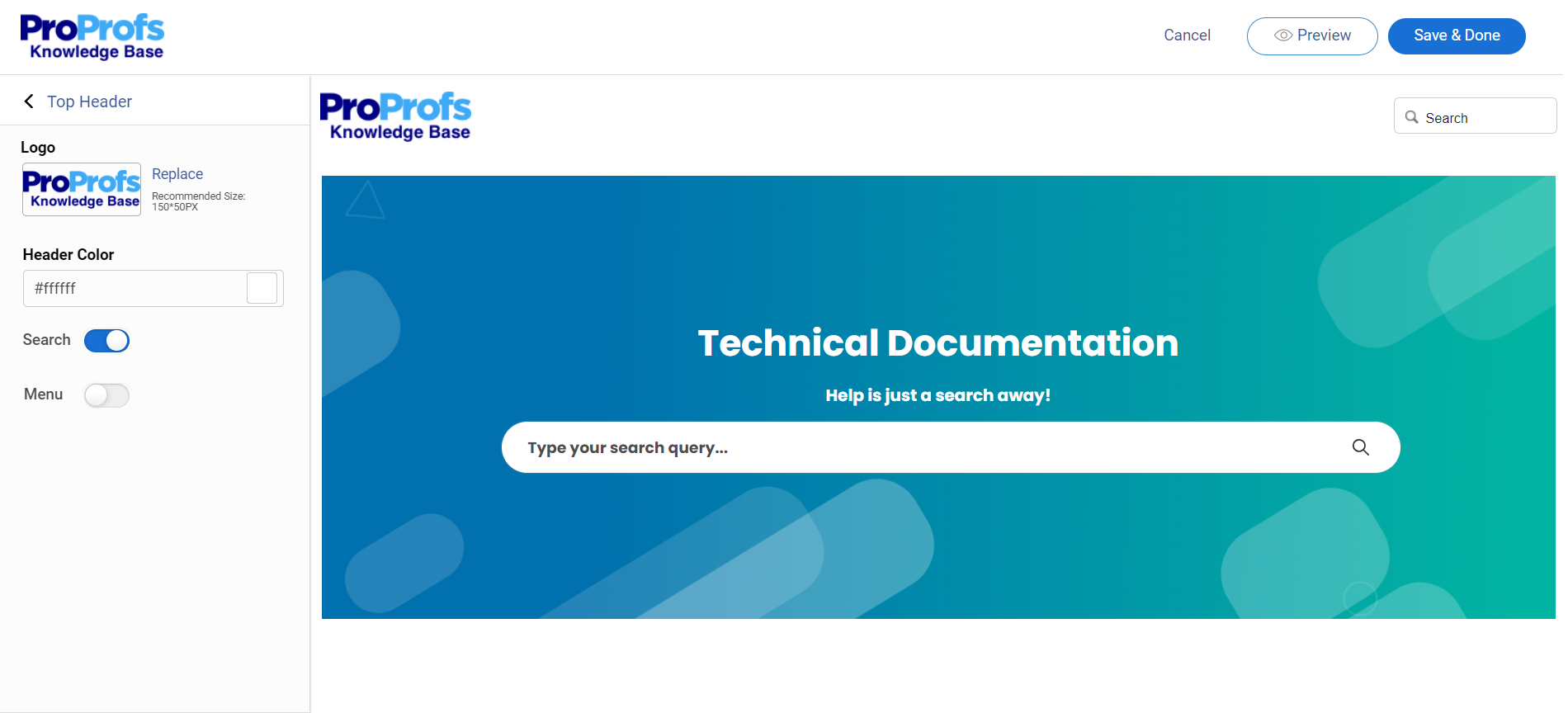
Start by selecting a documentation tool or platform with the features and functionalities you need to create a professional and comprehensive manual.
Look for tools that offer a user-friendly interface, various templates, collaboration features, and customization options.
Consider factors like ease of use, whether the tool supports real-time collaboration, and if it integrates with other tools your team uses, like your HR system or internal communication platforms.
Select a Template or Start from Scratch
Many online documentation tools offer pre-designed templates for policy and procedure manuals. These templates provide a basic structure and framework, saving time and effort. Choose a template that aligns with your industry and organizational needs.
For example, for healthcare, look for a template that includes HIPAA compliance policies. If you’re a startup, a more general template might suffice.
If you prefer a fully customized approach, you can start with a blank document, but be prepared to spend more time formatting and structure.
Structure Your Content
Organize your manual into logical sections and subsections using headings and subheadings. Create a clear information hierarchy, starting with an introduction and overview of your company’s mission and values. Follow this with sections dedicated to specific policies and procedures.
Consider grouping related policies, such as those related to human resources, finance, or operations.
This will make it easier for employees to find the information they need. A clear and consistent numbering system for sections and subsections to enhance navigation.
Populate with Content
Begin filling in the sections with your policies and procedures. Use clear and concise language, avoiding jargon and technical terms that might confuse employees. Write in an active voice and focus on providing actionable instructions.
For example, instead of saying, “Employees are required to submit their timesheets weekly,” say, “Submit your timesheet every Friday by 5 PM.”
Incorporate real-life project documentation examples and scenarios to illustrate the application of policies and procedures, making them more relatable and understandable.
Incorporate Visuals
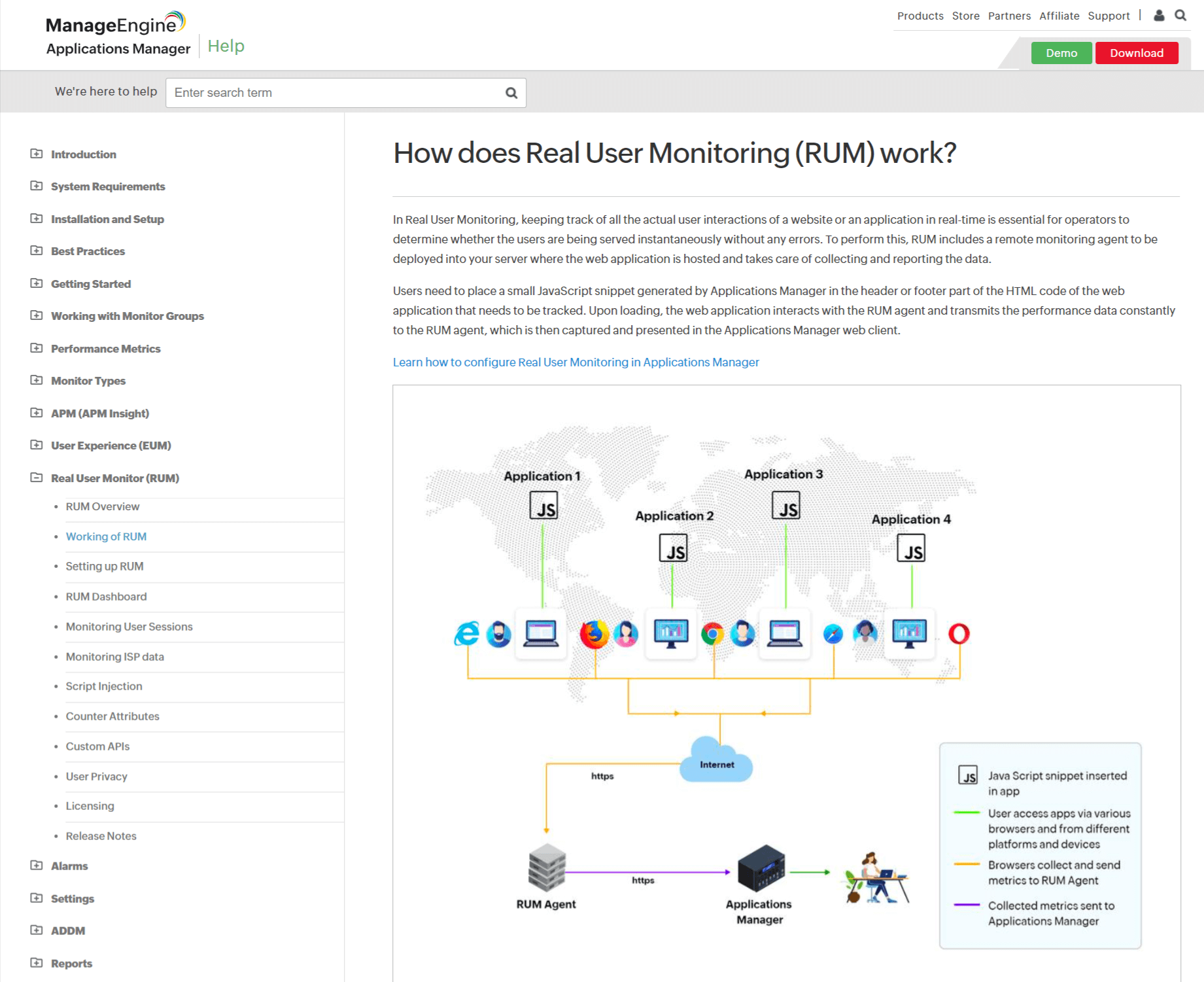
Enhance your manual with visuals such as flowcharts, diagrams, and tables to illustrate complex processes and improve comprehension.
For instance, a flowchart can effectively demonstrate the steps involved in an employee onboarding process, while a table can present different leave policies and eligibility criteria.
Visual aids can make the information more engaging and easier to understand, especially for visual learners.
Customize the Design
Apply your branding elements, such as your logo, colors, and fonts, to create a consistent and professional look and feel. Many documentation tools offer customizable themes and CSS options to tailor the design to your preferences.
Ensure the design is visually appealing, easy to read, and consistent with your brand guidelines. This will reinforce your brand identity and make the manual more engaging for employees.
Collaborate & Review
If multiple individuals are involved in creating the manual, utilize collaboration features within your documentation tool.
These might include simultaneous editing, where multiple users can work on the same document simultaneously, and commenting features, which allow for real-time feedback and suggestions.
Ensure the manual is thoroughly reviewed by key stakeholders, including legal counsel, HR, and department heads, to ensure accuracy, completeness, and compliance with all applicable laws and regulations.
Publish & Distribute
Once your manual is finalized, publish it in a format that is easily accessible to all employees. This might involve creating a PDF version for offline access, hosting it on your company intranet, or using a knowledge base platform to make it searchable and interactive.
Consider your employees’ needs and choose the format that best suits their access preferences and work styles.
Policies & Procedure Manuals: Sample Templates
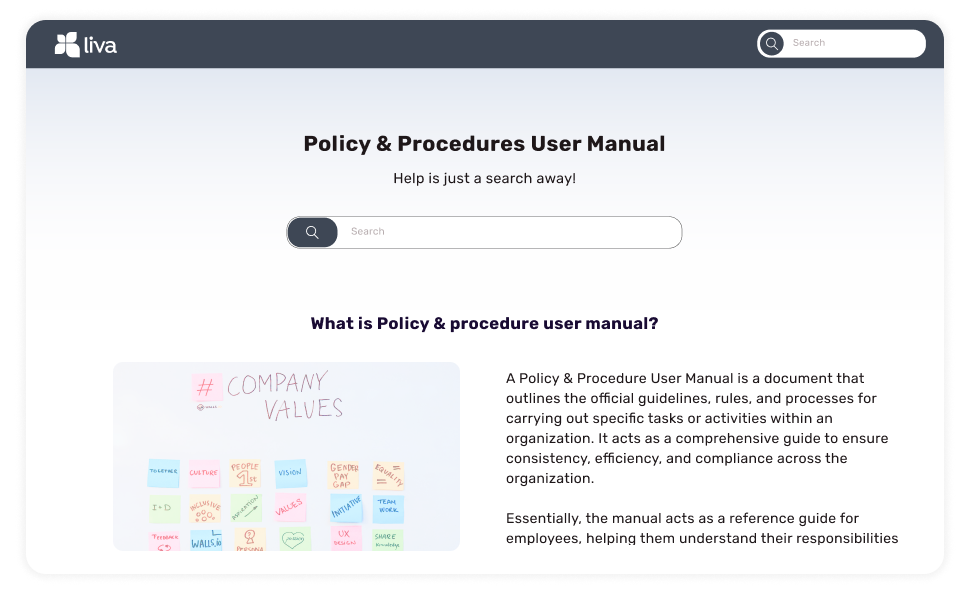
Policy and procedure manual templates provide a pre-designed structure and framework, saving you time and effort in creating your manual.
To use this template, select it, set up your site, and hit ‘Create.’ Now you can start creating your policy and procedure manual and customize it however you like.
What Are Some Policy & Procedure Manual Examples
Let’s now explore some policy and procedure examples to inspire your next manual creation.
1. ProProfs Knowledge Base
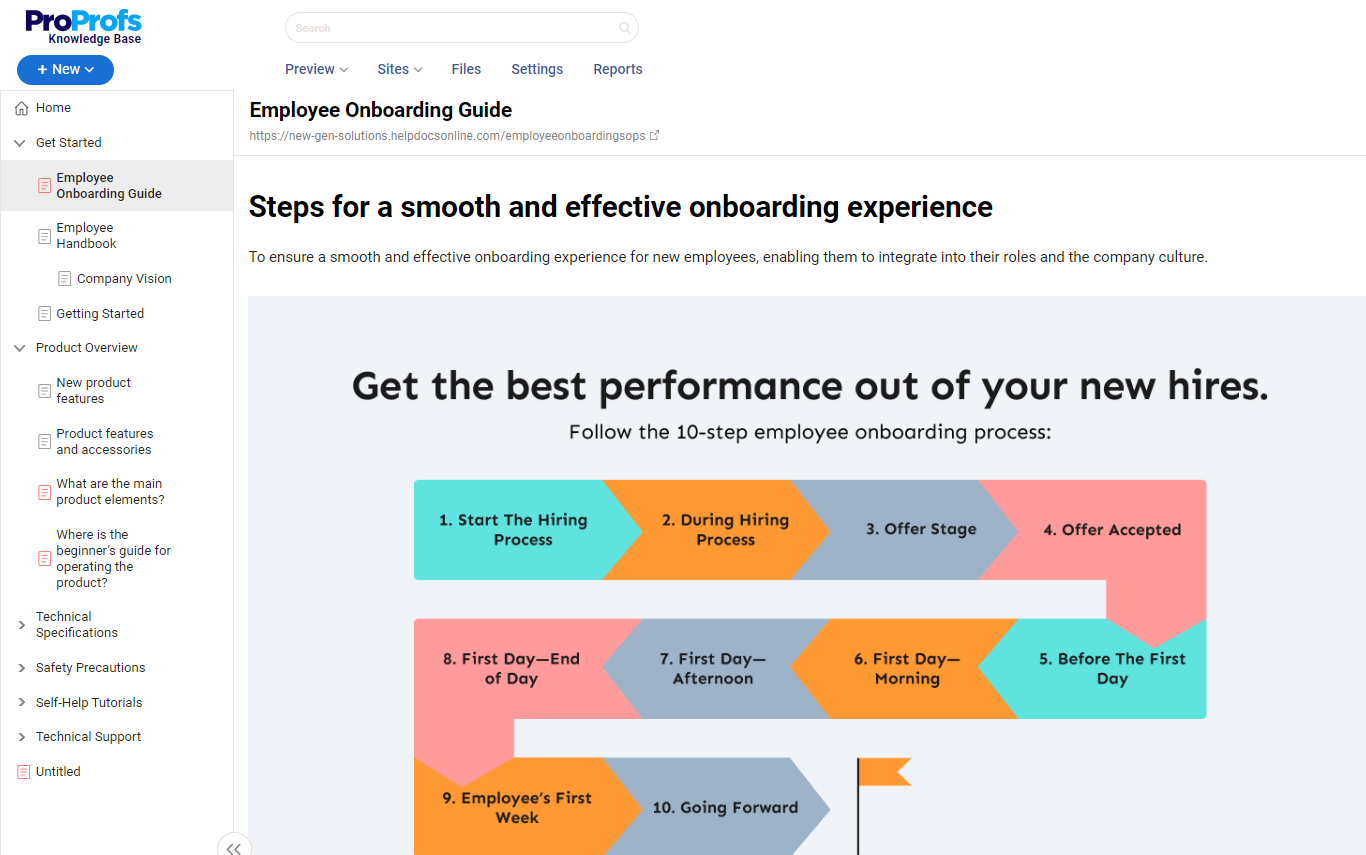
ProProfs uses its Knowledge Base Software to create user manuals, including employee handbooks and other internal help guides. It uses simple and intuitive language to cater to readers of all skill levels from technical or non-technical backgrounds.
Its help article, ‘Steps for a smooth and effective onboarding experience,’ uses illustrations and images to enable better understanding and interactivity for readers.
Government of UK
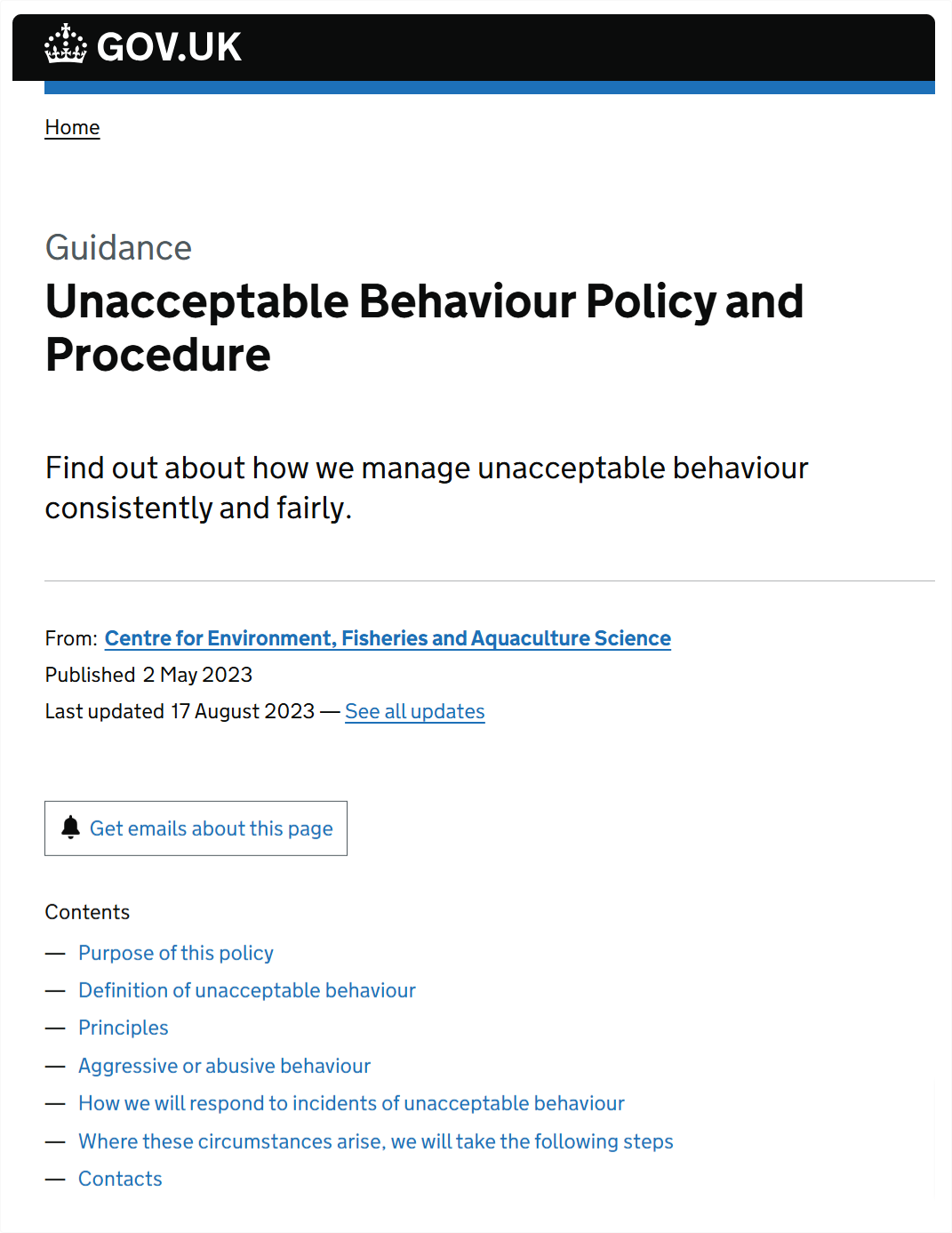
The UK government’s manual on ‘Unacceptable Behaviour Policy and Procedure’ is formal and informative. It provides clear definitions and explanations of unacceptable behaviors. It uses concise language and bullet points to present information in an organized and accessible manner.
The document effectively outlines procedures for addressing and reporting unacceptable behavior, ensuring clarity, and promoting a safe and respectful workplace environment.
University of Notre Dame
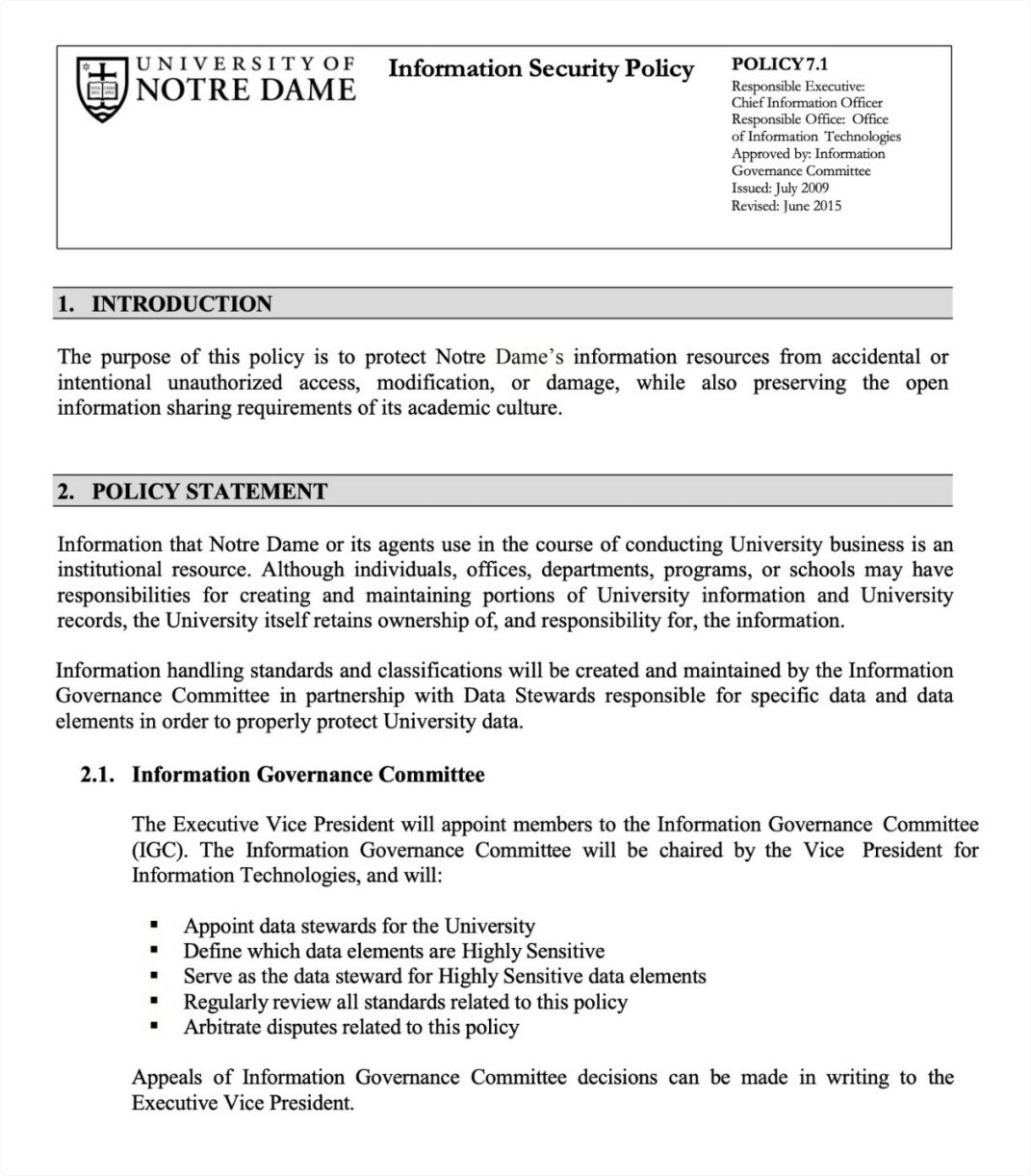
The manual about the Information Security Policy by the University of Notre Dame discusses the purpose of the policy and the different classifications of information. The policy applies to all faculty, staff, students, and others granted use of University information.
All individuals at the University are responsible for complying with the controls specified in the information handling standards.
Create a Policy & Procedure Manual to Bring More Clarity to Your Workplace
A well-crafted policy and procedure manual is a cornerstone for any organization. It provides a clear framework that guides employees, promotes consistency, and ensures compliance. Investing time and effort in creating a comprehensive manual can foster a culture of accountability, efficiency, and transparency.
Remember to consider the different types of manuals, understand their benefits, and incorporate essential elements like clear language, logical structure, and regular updates. Leverage templates and examples to streamline the creation process and ensure your manual effectively addresses your organization’s needs.
ProProfs Knowledge Base‘s user-friendly interface, customizable templates, and collaborative features let you create error-free, detailed policy and procedure manuals. Explore the tool more or request a demo below.
FREE. All Features. FOREVER!
Try our Forever FREE account with all premium features!







